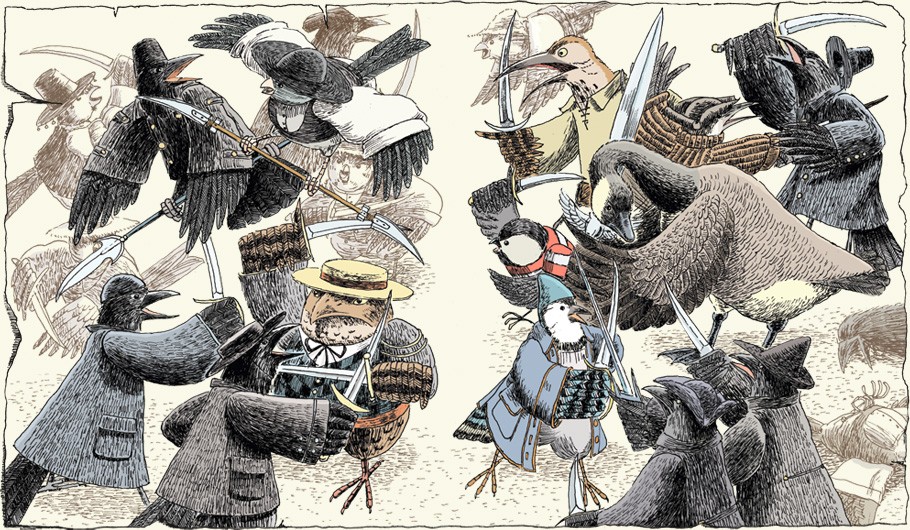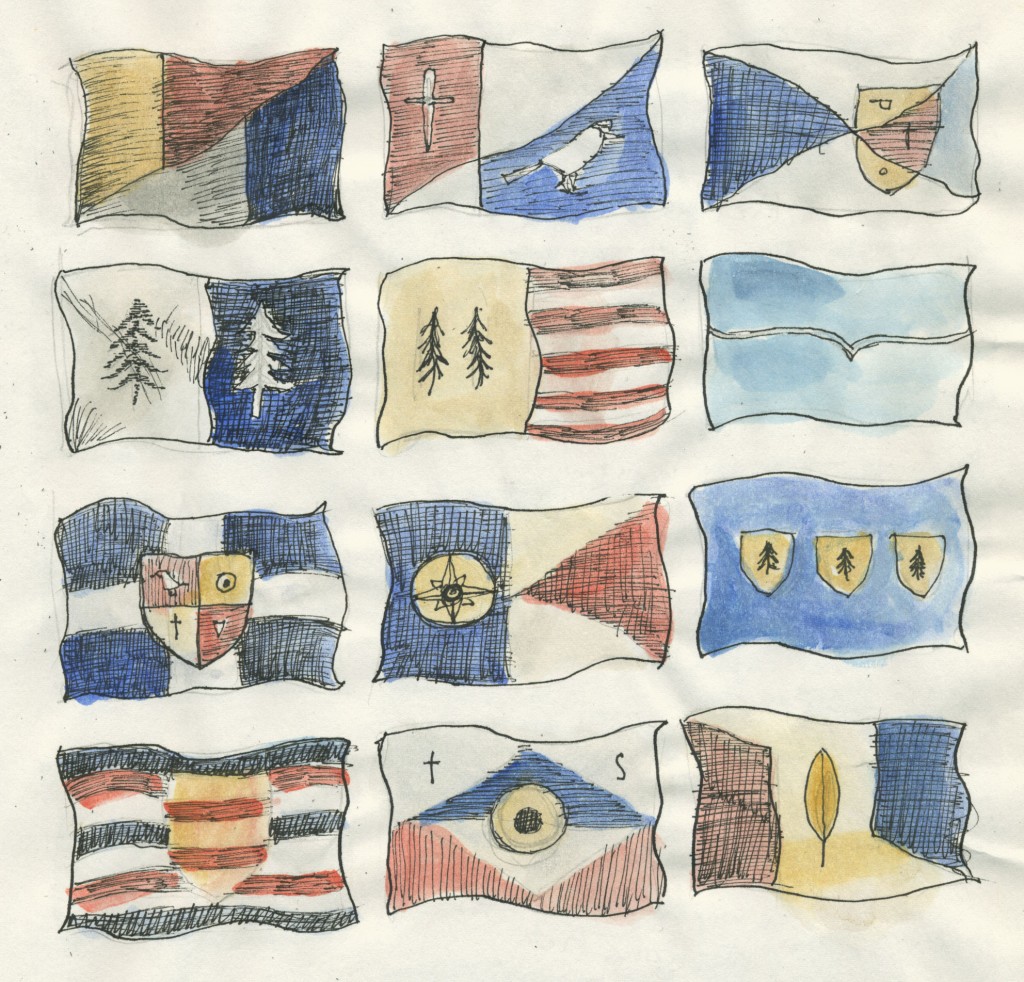Pirate Birds: A Peculiar History
By Leon Falke, Professor of Avian History
Long ago, before we gained our freedom, birds lived in a rather savage world of territorial governments constantly warring against one another. The leaders of these colonies rose from a merchant class, established informal territories along trade routes, then defended them against any other bird colony that dared to cross their borders. Tensions boiled over when the Thrush declared the entire Eastern Corridor from Canada to Florida off limits to migratory birds and merchant ships from other territories. As one might imagine, this heightened the conflict between Thrushland and the other major shipping territories such as Sparria, Virmany and Finchland. Those territories retaliated in turn by closing their airspace to everyone else. Eventually, migration was outlawed in nearly every territory. The end of migration led to the establishment of villages and townships where most birds were forced into farming or factory work to live. These settlements and businesses gave the colonial governments the opportunity to impose taxes upon it’s citizenry. The tax revenues enabled the Colonial governments to fund vast militaries to protect their interests and (supposedly) citizenry from constant danger. Most of the large, powerful bird colonies were comprised of the smaller bird species such as Finches, Sparrows, Vireos, and Thrushes. Organized in stationary settlements, these birds became more vulnerable to prey such as weasels, fox, hawks and owl. The risk was especially high for farmers and other birds who worked off the land. Sadly, the Colonial armies and navies did little to protect the citizens from predators, preferring instead to patrol the shipping lanes in search of rogue vessels and migratories.
While some of the forefathers of the original colonies may have been well-intentioned idealists, many became tyrants who imposed a tight rule over their population. They created strict laws ruling the behavior of the citizenry, controlling the production and distribution of food, establishing armies, building factories and prisons. The colonies were in constant war with one another until they found a shared enemy – birds who continued to migrate and chose to live outside of the colonies. These renegades were warblers ( non-combative and impossible to control), birds of prey including owls, falcons and hawks, (nearly god-like in their strength and wisdom) and fly catchers, woodpeckers, shorebirds, crows and jays. It was the last of these, Crows and Jays, who proved to be the most antagonistic to the colonies and were most instrumental in changing the course of this peculiar history. -LK








